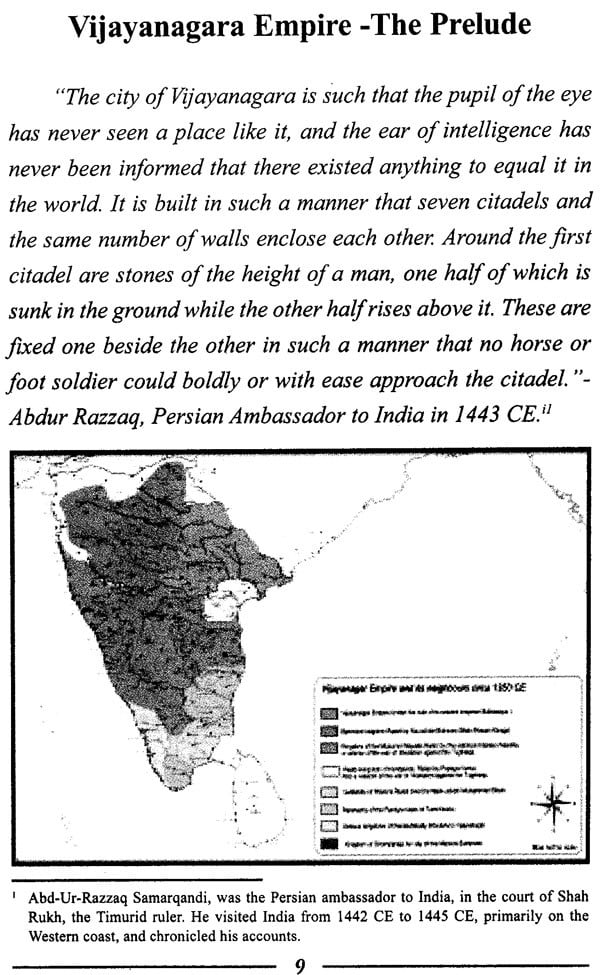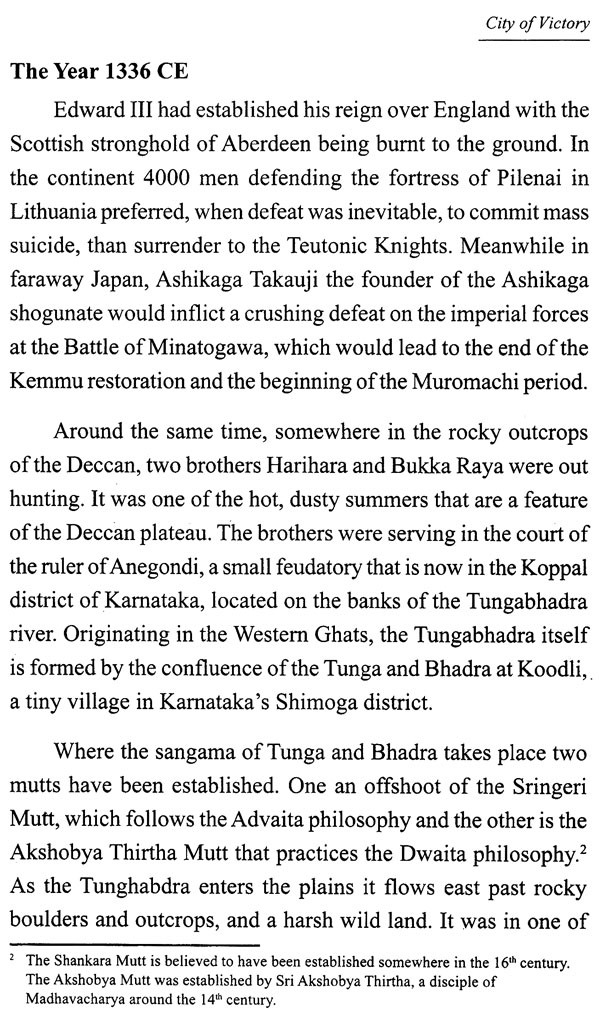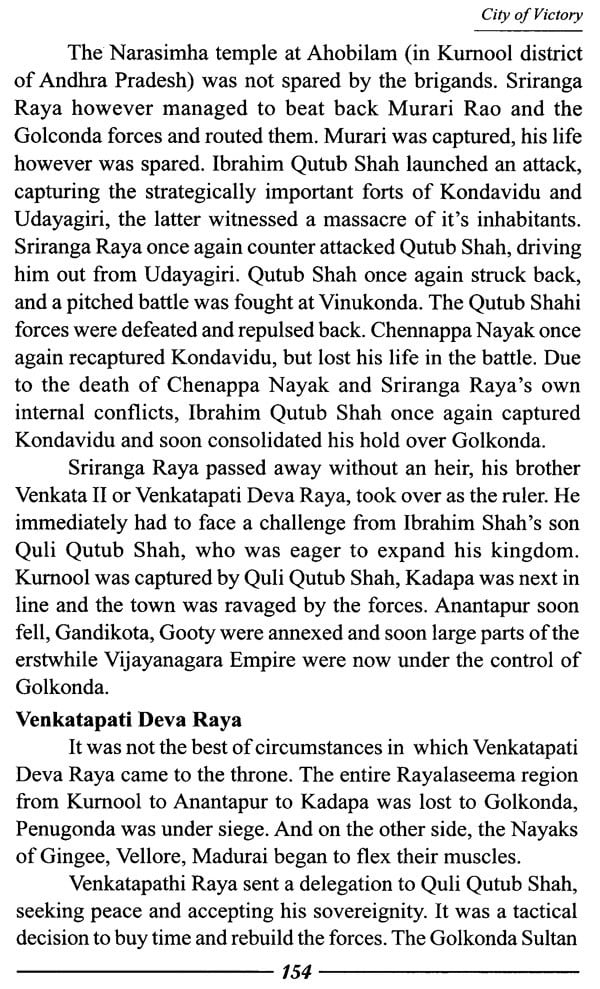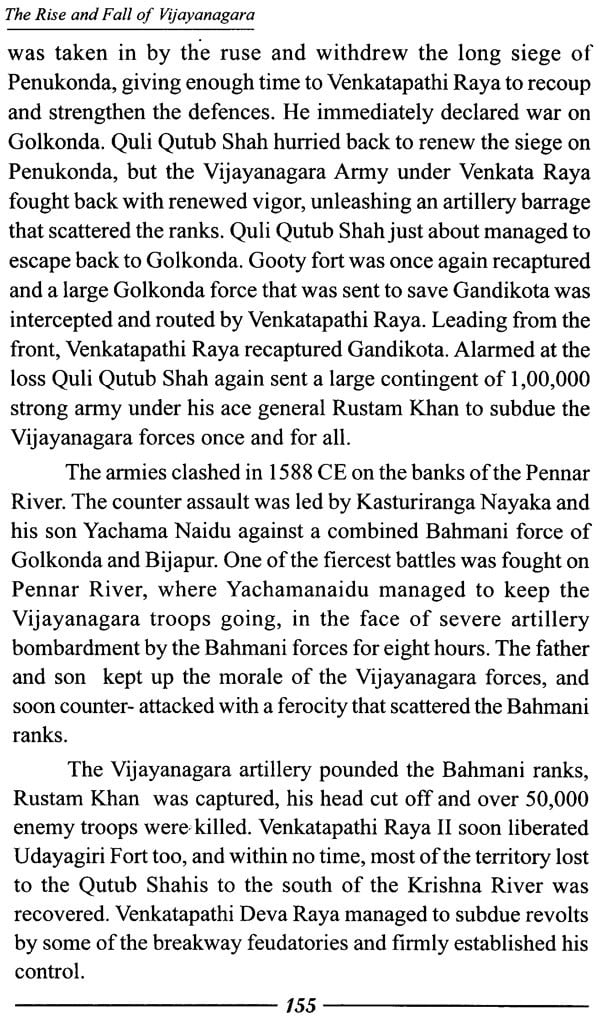
City Of Victory- The Rise and Fall Of Vijayanagara
Book Specification
| Item Code: | NCZ188 |
| Author: | Ratnakar Sadasyula |
| Publisher: | Centre for Cultural Studies, Samvit Kendra |
| Language: | English |
| Edition: | 2019 |
| ISBN: | 9788193373767 |
| Pages: | 160 (Throughout B/W Illustrations) |
| Cover: | PAPERBACK |
| Other Details | 8.50 X 5.50 inches |
| Weight | 210 gm |
Book Description
This book is a must read for anyone who wants to understand how the South held off foreign invaders for two centuries. Written in an easy style, the book makes for an engrossing read for all ages.
The Muslim onslaught was already making in-roads into Southern Bharata. The Yadava, Kakatiya, Hoysala and the Pandya kingdoms of the South were defeated by the invading Muslim armies from the North. It seemed the horrors of Muslim occupation in the Northern Bharata will repeat themselves in the South.
It was at this critical juncture of time the Vijayanagara kingdom was founded as a saviour of Hindu society, culture and civilization. The Vijayanagara kingdom stood for three important causes.
i) Thwarting the Islamic onslaught from the north
ii) Clearing the Muslim occupations in the South and
iii) Protecting, preserving and supporting the growth of Hindu Dharma, culture and civilization.
The greatness of the Vijayanagara empire lies in the fact that it succeeded in all these three aspects magnificently. The all-round contribution of Vijayanagara empire was responsible for the preservation and continuation of Hindu heritage in the social, political and cultural life of Bharata down to this day.
Research by both Bharatiya and foreign scholars in the past three decades, have generated a great deal of new and authentic material on the history of Vijayanagara.
Vijayanagara Empire is closely tied to the ethos and spirit of Telugu people. An entire region Rayalaseema gets its name from "Rayala Vaari Seema”, the land of the Rayas, the rulers of Vijayanagara. Every place in Rayalaseema has a connection with the Vijayanagara Empire. Be it the fortresses of Gutti, Penukonda, Gandikota, or the palace at Chandragiri or the holy temples of Tirumala, Ahobilam or the Nandi at Lepakshi, every place has a connect with the Vijayanagara Empire. In fact most of the landlords now in Rayalaseema were descendants of the Polygars who played a crucial role in the Vijayanagara Empire.
Apart from its military achievements, Vijayanagara Empire was also known as the Golden Age of Telugu Literature. The Ashta Diggajas, the eight great poets in the court of Sri Krishna Deva Raya, such giants like Allasani Peddana, Nandi Timmanna. Sri Krishna Deva Raya himself was called as Andhra Bhoja, and an author of note, apart from being a great ruler and warrior. And there were great poets like Kavi Sarvabhouma Srinatha, and composers like Annamacharya during the period. In fact the three centuries of its rule was a Golden period for artistes, writers and sculptors.
Book's Contents and Sample Pages












